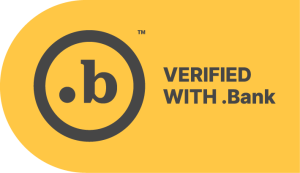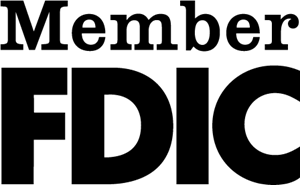“A new job is like a blank book and you are the author.” – Unknown
As you start your first full-time job, many opportunities open up. You get a chance to put all the hours you spent studying, training and developing your craft into practice. It’s exciting to start setting your goals and think about what you want to accomplish. The feeling of starting your career can make it tough to envision life after you finish working. After all, you just got started; why should you have to think about how you will live after employment?
Regardless of how long you plan to work or the level of your ambition, saving for retirement should be approached like the tortoise in the race. Slow and steady is the only way to win, so starting your saving plan early is essential. But the best part: you don’t have to give up on your current dreams to prepare for retirement.
Keep reading to learn more about standard retirement accounts, how they work and how you can start saving.
Setting Your Retirement Goals & Overcoming Challenges
Saving enough money to live on after retirement can be a daunting task. However, like any other significant endeavor, you have to take your retirement one step at a time. The first step should be to create a financial assessment. After looking at your monthly income, expenses and total debt, you can see how much money you have to set aside for your savings.
Your assessment will help you better understand the financial challenges and obstacles that may keep you from attaining your retirement goals. Some of these challenges include:
- Paying off student loans – Your education is a great investment and may have helped you land your current job. However, if you’re fresh out of school, student loan payments may be weighing heavily on your mind. You’re not alone. Over 43 million people in the U.S. are paying off student loans after they leave school. Paying off these loans promptly is important and can limit how much you can save.
- New fixed expenses – If you’ve just moved into your own place after starting your first job, you have many new bills to account for, like rent, utilities, groceries, insurance and other miscellaneous costs. Moving to another city or area is an added cost. When moving into a new residence, you may have to pay a month’s rent or security deposit upfront. These new expenses and upfront fees can make saving for the future difficult.
- Business startup costs – If you are starting your own business out of school, you will have a list of expenses to address. To learn more about the importance of finding a good business loan, check out our article here.
While these challenges may seem like a substantial barrier to starting your retirement savings, they aren’t impossible to overcome with focused planning and spending. Once you’ve identified what challenges may stand in your way to saving for retirement, you can begin to look at how much you can feasibly save each month for retirement.
A rule of thumb is that you will need 70-90% of your pre-retirement income to maintain your standard of living when you stop working. Many experts suggest saving 15-20% of your paycheck into a retirement account. However, if you can’t reach that goal today, that’s okay! You may only be able to save 5-10% of your income right now. The important thing is the amount of time you are giving your savings for growth. Check out our calculators to see how much your savings can increase.
Once you’ve completed your financial analysis, you can determine what type of retirement account you need to use to start saving.
Starting a Retirement Account: How Do They Work?
Setting aside cash in a traditional savings account for emergencies and large purchases should be a part of your monthly budget. However, you won’t be able to earn enough through this method to fund your retirement. You’ve probably heard the phrase, “make your money work for you.” A retirement account is designed to do just that.
Your contributions to a retirement account stay in your account for long periods to grow in value. Two standard savings methods are individual retirement accounts (IRAs) and 401(k) plans. Let’s explore each type of retirement plan to see which account could work better for your situation.
How Does an IRA Work?
The individual retirement account (IRA) is one of the most common ways to achieve sustained growth over time. While there are various ways you can set up your individual retirement arrangement, the most common methods are through a financial institution, like your local bank, or a brokerage firm. Individual retirement accounts invest your contributions into various funds that help your savings grow.
The U.S. government established these accounts in 1974 to help workers who didn’t have retirement coverage through other means. Over 40 years later, these accounts are still the best place to start regarding your retirement.
There are two types of IRAs you can utilize; both offer specific advantages that could benefit you depending on your strategy. We can give you a brief overview of them here, but it’s always a great idea to consult with a financial advisor to see which type would be right for you.
- Traditional IRA – This account allows you to save pre-tax income for retirement, making you eligible for tax deductions now. You then pay taxes on income as you withdraw it from your account.
- Roth IRA – This account is a variation of the traditional IRA that allows you to contribute after you’ve paid taxes and withdraw income from the account tax-free once you retire. There are limits to how much you can contribute to this account based on your income and filing status (single or jointly filing with a spouse).
What Is a 401(k) Plan?
A 401(k) plan is a qualified plan established by your employer. If you elect to utilize a 401(k) plan, your employer withholds a portion of your wages and places it into an investment account. Depending on the arrangement, your account may be managed by a third party or investment firm. There are a few types of plans available, but the most common 401(k) accounts usually have a traditional and a Roth variant that works similarly to an IRA.
To incentivize savings, many employers offer matching, which means they will match every dollar you deposit up to a certain percentage of your paycheck. This is a great opportunity to increase your retirement savings.
Which type of account is best for you? The answer may be both. It will depend on your income, your tax advantage preferences, how the fund is managed and what limits you have on your contributions. You can start with your employer’s 401(k) plan to take advantage of matching any matching incentives, then place the rest of your allocated savings into an IRA for future growth.
Save for Tomorrow While Making the Most of Today
Saving for retirement doesn’t mean you have to give up your dreams of going on a vacation, buying a new vehicle, purchasing a home or starting a business. It’s all about your budget! To learn more tips about how to save money fast, check out this article.
If you want to start a retirement account, visit Community Point Bank’s IRA and CDs page to learn more about long-term investments for retirement to help you make the most of your money today.
Tired of poor service and want more ways to make the most of your banking experience? Check out Community Point Bank’s list of excellent services. Want to talk with us in person? Visit our contact us page to learn more.




